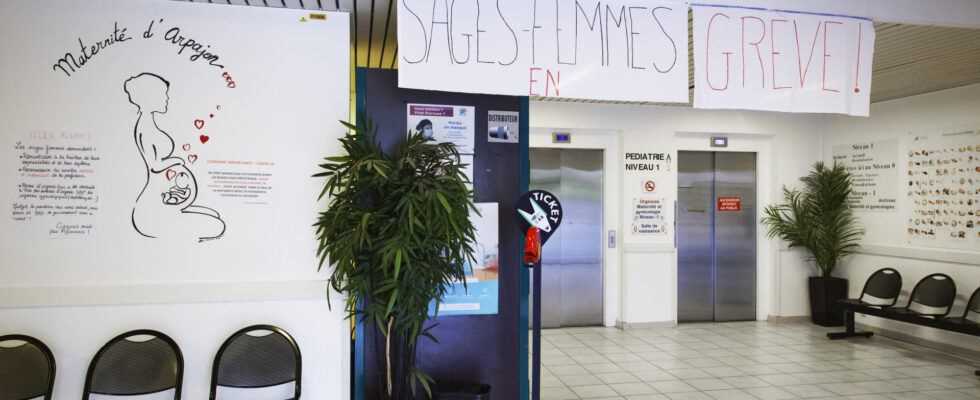ReportageDisappointed by the Ségur de la santé, they mobilized to demand recognition of the medical nature of their profession, an increase in salaries and more staff.
“Storks but not pigeons”. The poster hung in the entrance of the small maternity ward of the Arpajon hospital center (Essonne) sounds like a cry of heart. For several months now, hospital midwives have been mobilizing across France to demand recognition of the medical nature of their profession, an increase in salaries and more staff … with the impression of not being heard by the government. “Code red! “, they wrote in capital letters to signify their anger and alert future parents to their working conditions. For this predominantly female profession, these two words say the urgency of the situation: it is a caesarean section to be performed in the event of an immediate threat to maternal or fetal vital prognosis. The last resort.
Shortly before 8 am, Fouzia Berbere goes down to the obstetrical unit, located at least one, and puts on her light purple blouse. She begins her twelve hour shift. Supported by two nurses and two childcare assistants, the 34-year-old midwife is briefed on the medical records of the three patients in the delivery room this Friday morning. The relay is made with the night shift, it is necessary to check that the “Neonate respirator” functions properly, while monitoring the screen that brings together “Monitos” (which measure both the baby’s heart rate and the contractions of the uterus). His young midwife colleague, Catherine Albagli-Curiel, updates the Veleda tables of the patients with the number of weeks of pregnancy, the dilation, the method (s) of initiation if there are, in the Lilac rooms, Daffodils. and Mimosas.
Added to this is the paperwork to be completed by hand: the future file centralization software will not be put in place before June. While responding to the concerns of the three pregnant women, it is necessary to take care of the coding of acts and input-outputs on the computer, while for birth certificates and especially perinatal records, it is necessary to copy health information. mother and unborn child, on two or even three other handwritten documents.
Around the central island – the ” Control Tower “ located at the crossroads of the different birth rooms – the birth bracelets are prepared in a good mood, we bet on the weight of the children to come, the floodgates erupt and laughter erupts: the team is united to go through the ordeals. “Contrary to what society imagines, what is happening in maternity hospitals is not all rosy. There are miscarriages, children endangered by their mothers in postpartum, women who must be detected as victims of domestic violence ”, says Fouzia, who graduated in 2010. But “Here, we know that we can count on each other. “
You have 63.38% of this article to read. The rest is for subscribers only.
